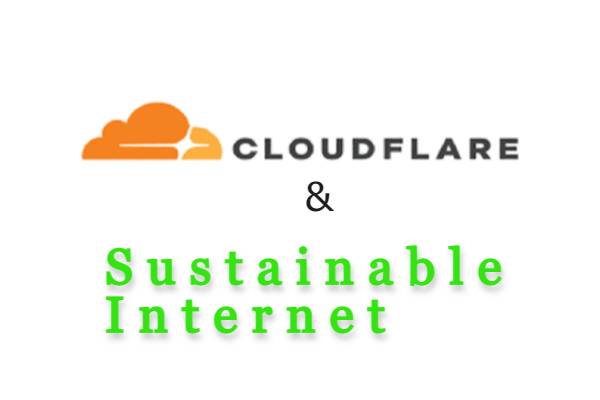San Francisco, USA: Cloudflare, a global content delivery network (CDN) and DDoS mitigation company has committed to helping build a more sustainable Internet. In the company’s second annual report about its environmental, social and governance (ESG) impacts in 2021 published last week, Cloudflare commits to helping build an Internet that is principled, accessible for everyone, and sustainable.
Cloudflare commits to helping build a more sustainable internet
Cloudflare said its goal is to help build a greener, carbon-free Internet and to achieve that goal it runs its operations with 100% renewable energy. And the company is working to document and account for its remaining emissions footprint, the report stated.
Quoting the preliminary findings from an upcoming study by Analysys Mason, the report claimed that Cloudflare’s Web Application Firewall (WAF) “generates up to around 90% less carbon than on-premises appliances at low-medium traffic demand.”
The Analysys Mason study is based on modelling the use of on-premise appliances by enterprises, and comparing the energy consumption (and carbon emissions) of those appliances to the energy and carbon of equivalent functions provided by Cloudflare from its data centres.
Addressing historical GHG emissions
The San Francisco-based company has committed to offsetting or removing all historical greenhouse gas (GHG) emissions resulting from powering its network by 2025. In doing so, in 2022, Cloudflare completed an analysis of the company’s historical network footprint from its inception to its first offset purchases in 2018.
As per the analysis, Cloudflare’s network emitted approximately 31,284 metric tons (MT) of carbon dioxide equivalent (CO2e). However, the company in the ESG impacts report informed that it has started to address those emissions with its first offset purchase in 2022 by supporting a Verra-verified REDD+ project in the state of Para, Brazil.
More so, of the total of 6,060 MT CO2e emissions only 25,224 MT is left to be addressed, Cloudflare claimed.
Further, the report said Cloudflare continues to work on cataloguing possible sources of Scope 3 emissions, which cover carbon emitted by others, including supply chain and logistics emissions. The company published its first carbon emissions inventory in 2020, which included Scope 1 and Scope 2 emissions.
“We started with those two categories to comply with Greenhouse Gas Protocol requirements. However, we also understand that in order to be fully accountable for our footprint, our future reporting must also include Scope 3 data,” Cloudflare said in the latest ESG impacts report.
Eliminating waste — recycling and repurposing hardware
Along with the commitments to help build a more sustainable Internet, Cloudflare in the ESG impacts report informed that a major focus of its engineering and sustainability teams in 2022 was reducing the amount of waste associated with its global network.
In doing so, Cloudflare has implemented sustainability principles at every stage of its hardware design, procurement, servicing, and decommissioning processes. And overall this is making it easier for its customers to recycle too, the company said.
In addition, as part of designing its next generation of servers, Cloudflare has implemented modular design principles that will allow its future upgrades to focus on individual hardware components rather than replacing the entire servers. This will enable the company’s engineers to continue to improve the hardware’s performance and efficiency, while also making better use of systems and avoiding parts replacement.
Cloudflare said it is also working with suppliers to ensure the new modular components procured by it use open-source and not proprietary. And that will allow those parts to be resold instead of sent to a landfill.
Recycling and e-waste
In terms of recycling and e-waste, Cloudflare claimed 95% of its data centres are covered by contractual agreements to resell or recycle decommissioned network equipment, wherever possible.
Based on data from its decommissioning partner, Cloudflare said in the past 12-month period, around 35% of its decommissioned hardware was either resold or recycled, while 69% was destroyed. Moreover, around 99.3% of destroyed items were classified as data-bearing devices, including SSD cards, and were wiped and destroyed consistent with Cloudflare security requirements.
In order to push its recycling efforts, Cloudflare has partnered with Iron Moutain. This tie-up makes it easier for Cloudflare customers to decommission and dispose of their used hardware appliances sustainably. Also, the two companies have expanded this partnership to offer preferred pricing and value-back for customers that recycle or remarket legacy hardware through their service.
This year’s ESG impacts report highlights the commitments of Cloudflare to helping build a more sustainable internet as well as expanding the value and scope of Cloudflare’s Impact programs. Besides, supporting humanitarian and human rights causes, helping protect Ukrainians’ access to the Internet against DDoS and other cyber attacks. And examining how the company calculates and validates emissions data.

